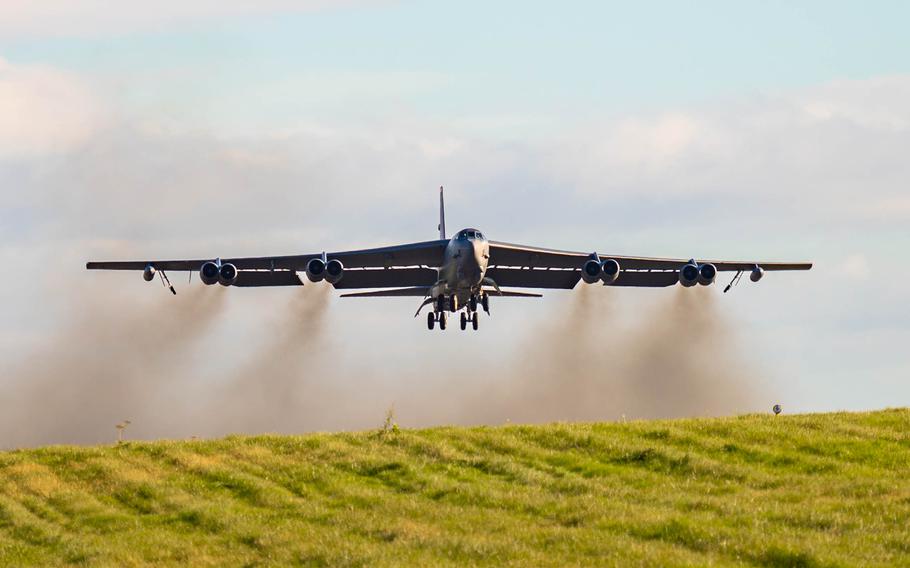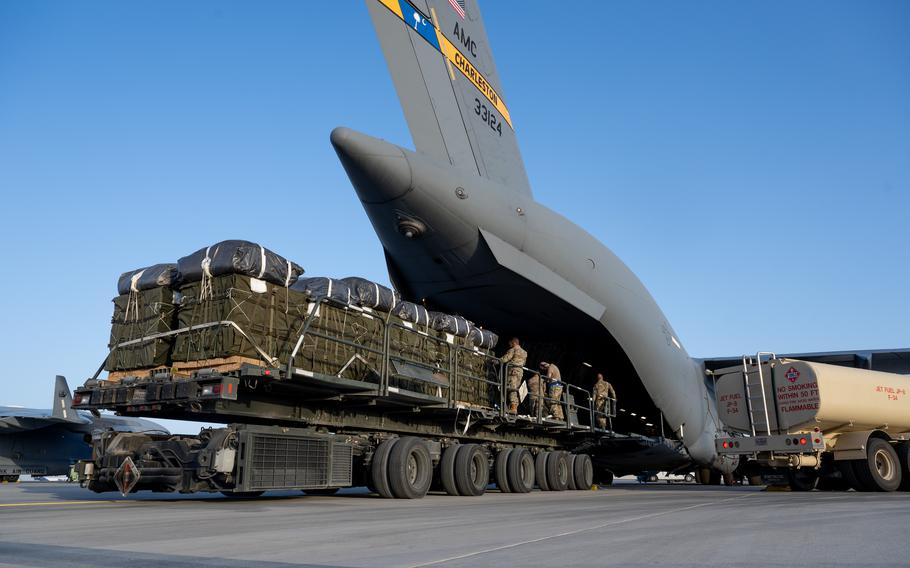
A B-52H Stratofortress assigned to the 20th Expeditionary Bomb Squadron takes off from RAF Fairford, England, on Nov. 22, 2024. The Air Force's revamped process for deploying personnel and aircraft has caused confusion across the service and been met with reluctance at some major U.S. military commands, the Government Accountability Office found. (Mary Bowers/U.S. Air Force)
An Air Force overhaul of personnel and aircraft deployments was inadequately planned and could leave some wings struggling to support their home base while its units are away, according to a federal watchdog agency.
Air Force Force Generation, the service’s new model for deployments, may have been rolled out too hastily, the Government Accountability Office says in a new report released Tuesday.
The Air Force said it implemented the plan as quickly as possible to respond to a potential global conflict. The initial intent was for all major commands to follow the four-phase system over two years, but some have been reluctant to transition their subordinate units to the deployment model, the GAO found.
“There has been uncertainty and confusion across the service,” analysts said in the report, which added that the Air Force did not account for how units and personnel in high demand may be affected.
During site visits to three major commands, officials meeting with the GAO team compared the new deployment guidance to “policy by PowerPoint presentations and emails,” the report said.
Officials described the former Air Expeditionary Force process as “crowdsourcing,” whereby personnel and equipment from various wings were selected to deploy together, the report said.
But that method was unsustainable and problematic, Air Force officials told the GAO. Combining airmen from different wings often meant that they had never met or worked together prior to deploying, which could degrade unit cohesion, according to the report.
So the Air Force switched to the new process, in which aircraft and personnel train together before the assignment and most of a wing deploys at once. The shift aligns the service with how the Army and Navy operate.
It’s organized into four six-month stages. “Reset” is the first and includes aircraft maintenance, personnel leave and basic training.
During phase two, called “prepare,” units increase training, while during “certify,” the next phase, they engage in joint exercises. The final stage is the window when units are ready to deploy.
But that timetable has often proved unworkable in practice, the report found.
Air Mobility Command, for example, said the plan calls for 16 C-17s to be in the fourth phase at any given time, but the unit receives daily mission requests for about 40 to 50 C-17s, according to the report.
Sometimes, events such as the October 2023 Hamas attack on Israel lead to greater demand, and the command has to pull aircraft and personnel from other phases, the GAO said.

A U.S. Air Force C-17 Globemaster III assigned to Air Mobility Command is loaded at an undisclosed location in the U.S. Central Command area of responsibility in March 2024. The revised way the Air Force deploys its personnel and aircraft was criticized by officials at three major U.S. military commands, according to a new watchdog agency report. (Lawrence Sena/U.S. Air Force)
Officials from the 2nd Bomb Wing at Barksdale Air Force Base, La., said their personnel cannot “reset” for six months because they must consistently participate in nuclear deterrence and bomber mission-related tasks.
A counterpart based at Minot Air Force Base in North Dakota, the 5th Bomb Wing, told the GAO investigators that requiring a whole unit to deploy could degrade another bomber wing’s ability to support its home base.
The unit needs airmen certified to handle nuclear weapons, and a large-scale deployment could create personnel shortages, officials said.
And a wing at Joint Base Charleston in South Carolina said that under the new Air Force deployment parameters, the base would not have enough forces to guard entrances and would therefore have to close three of seven gates. The Air Force later reduced its request for personnel.
The GAO recommended that the Air Force do a service-wide assessment of minimum staffing needs and examine potential gaps and risks associated with reduced support at its bases.
The Air Force agreed with those recommendations and estimated that it would have those assessments ready by January.